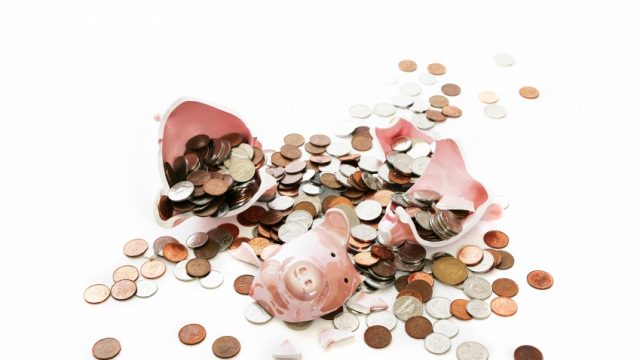North Dakota's Tax Revenues Are Actually Down 25 Percent Over The Previous Biennium

“[E]ven with revenues below projections, revenue collections are higher than they were two years ago,” the Fargo Forum editorial board reports today, attributing that statement to Governor Jack Dalrymple who met with the board this week.
The paper then goes on to castigate “Chicken Littles in the blogosphere” who “who breathlessly wheeze that the state spends too much, taxes are too high, and state government has grown too big.”
“It’s a litany of ideological claptrap from a cabal of no-nothings who have been reliably wrong since the state’s economic fortunes improved,” the paper continues.
I’m not sure how one would go about wheezing breathlessly (it has always seemed to me that wheezing requires, at the very least, breath). Nor am I sure what a “no-nothing” is. Maybe they meant know nothing? Perhaps.
But setting aside the semi-literate insults, the fact is that North Dakota’s revenue collections are not higher than they were two years ago. If one looks at the Office of Management and Budget’s most recent report on general fund revenues it does show that through October the 2015-2017 biennium has seen $75 million more in revenues so far than at the same point in the 2013-2015 biennium.
Superficially, the report backs up Dalrymple’s claim. Yet there’s a problem if you study the actual line items in the report which is something we “no-nothing” bloggers like to do.
There is a massive amount of money in this biennial report which is not tax revenue but a transfer from one of the state’s funds. A $657 million transfer, to be exact. I spoke with OMB Director Pam Sharp about that when I wrote about this revenue report last month. “That was a transfer from what used to be the property tax relief fund into the general fund,” she said. “It was provided by the legislature to transfer into the general fund. At the end of the biennium the legislature eliminated the property tax relief fund.”
There was a similar transfer of over $341 million in the last biennium, which you can also see in the report above. While it’s right and proper that these funds to the general fund should be accounted for in the OMB’s reports, since those funds did flow into the general fund, suggesting that transfers from now-defunct funds count as proof that tax revenue is not declining is more than a little misleading.
Here’s a chart comparing the 2013-2015 and 2015-2017 biennium revenues through October. The first set compares revenues with the property tax fund transfers included. The other removes them.
With the transfers, the general fund shows a modest 5.7 percent increase in revenues, which is what Dalrymple was referring to. Absent the transfers, however, the state shows a more than 25 percent decline in revenues.
The Forum is correct when it states that “fall-back funding is readily available” to bridge budget gaps. The fiscal reserves the state has socked away are, indeed, prodigious. So for the current biennium the state should be ok. Where we should be worried what position the state will be in for the next biennium. The one Dalrymple’s successor will have to deal with.
“We put the funds in place and shored them up so that we could offset this sort of a situation,” state Senator Gary Lee, chairman of the Legislature’s interim Budget Section committee, told me for a Watchdog report this week. “I think we’re going to be in good shape this biennium. Next biennium, if it stays like this, it could paint a little bit different picture.”
If the oil industry remains in the doldrums beyond the 2015-2017 biennium, the state is going to have serious budget headaches.






